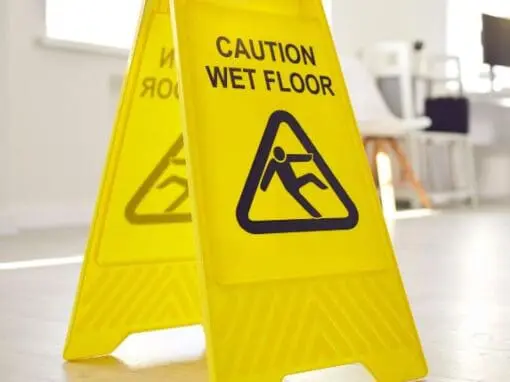What you will learn
By the end of the course you will be able to:
- Understand the importance of helping individuals who are injured or unwell in the workplace and the impact of first aid training in these situations.
- Familiarise yourself with the goals of first aid, your legal responsibilities, consent processes and the critical responsibilities of a first aider.
- Develop skills to stay composed, assess emergency scenarios accurately, recognise dangers, prioritise treatments and implement comprehensive measures for post-incident cleaning and infection control.
- Gain insights into the respiratory system, consciousness levels, unconsciousness causes, airway management, evaluating breathing, positioning for recovery, CPR methods, using AEDs and the vital steps in the chain of survival.
- Identify instances of choking and perform first aid for both minor and critical cases, taking into account the risk of hypoxia.
- Treat different wounds, manage bleeding and assist casualties with shock.
- Understand the workings of the circulatory system and heart, learn about the impact of major blood loss, recognise the symptoms of a heart attack and respond effectively during cardiac arrest situations.
- Recognise the signs of anaphylactic shock and administer the correct first aid treatment.
- Treat different minor injuries including cuts, grazes, nosebleeds and eye injuries.
Modules
Your Title Goes Here
1. Introduction
2. Understand the Role and Responsibilities of a First Aider
3. Assessing Incidents
4. First Aid to Unresponsive Casualties
5. Identifying Choking and Administering First Aid
6. The Circulatory System, Blood Loss, Heart Function and Medical Heart Emergencies
7. Managing External Bleeding and Shock
8. Managing an Anaphylactic Shock Response
9. Recognise Different Burns and Their Severity and Treatment
10. Administering First Aid to Minor Injuries
Who is this course for?
- Designated qualified first aiders in any workplace or industry looking to refresh their first aid knowledge annually and have already taken a practical Emergency First Aid At Work course in the last three years. Or nominated first aiders seeking an introduction to first aid before undergoing their practical training. If you require more extensive first aid training depending on the type of injuries in the workplace that may occur then our online First Aid at Work Refresher Training may be more suitable.
- Any staff member who has been nominated as an appointed person to take charge of first-aid arrangements and where the workplace assessment has indicated that factors negate the need for a fully trained first aider.
- Any staff member who doesn’t have a specific first aid role but wishes to learn and build confidence in administering first aid at work.
Certification
Upon successful completion of this online course, you’ll be sent a personalised digital certificate as a PDF, enabling you to download and print it.
You can access a copy, reprint or download this certificate on our LMS (Learning Management System). This is your proof that you have been trained in health and safety best practices and achieved compliance. The certificates include a verification number so anybody can authenticate the certificate’s legitimacy.
Our certifications include a renewal date but there is no legal requirement to renew your training and certificate within a specific timeframe. However, we do recommend that you arrange refresher training after 1 year so you remain confident in administering your first aid skills. You should update your health and safety knowledge and skills regularly.


Genuine reviews
Frequently Asked Questions
Your Title Goes Here
How long does a first aid training certificate last for?
Here is an overview of the expiry date for different types of first aid courses:
- Practical First Aid at Work (FAW) and Emergency First Aid at Work (EFAW): Valid for three years, with an annual refresher course recommended to maintain skills.
- CPR and AED Training: These certifications last about two years, due to the need for up-to-date knowledge in these critical procedures.
- Specialised First Aid Training: Validity varies for courses specific to certain environments or scenarios.
What is a first aider?
Two main types of first aid training are:
- Emergency First Aid at Work Training: For basic workplace injuries and illnesses.
- First Aid at Work Training: Covers a broader range of medical situations.
Training typically lasts three years, with annual refreshers advised. Our online EFAW course is suitable for annual updates, particularly in low-risk environments. Specialised training may be required in certain workplaces.
What is the difference between Emergency First Aid at Work (EFAW) and First Aid at Work (FAW) training?
EFAW Training is ideal for ‘low risk’ environments like offices, covering common first aid scenarios and emergency medical situations. Requalification covers the same content every three years.
FAW Training includes EFAW topics plus additional training for specific injuries and major illnesses like heart attacks and epilepsy. It’s more extensive, often exceeding a day, and requires requalification every three years.
Does online EFAW training replace practical EFAW training?
What are the employers' regulatory obligations to provide first aid at work?
Employers should assess first aid needs based on work nature, workplace size and layout, proximity to medical facilities and working hours. Basic requirements for every organisation include a stocked first aid kit, designated first aid staff that oversee workplace first aid provisions and accessible first aid information for employees.
Regular updates to first aid provisions are crucial, particularly with changes in workplace conditions or work nature. High-risk workplaces, such as offshore sites, should be aware of specific safety regulations.
Universal legislation includes:
Health and Safety At Work Act 1974
How many appointed first aid staff or first aiders do I need?
The Health and Safety Executive (HSE) does offer guidance on how many first aiders you may need.
What is the difference between a first aider and a person that is just appointed to take responsibility for an organisation's first aid provision?
How do you choose a first-aid training supplier?
The Heath and Safety Executive no longer provides or endorses first aid training, allowing employers more freedom in selecting training providers. Nonetheless, in compliance with the Health and Safety (First-Aid) Regulations 1981, your selection should be grounded in a first aid needs assessment and careful due diligence.
When choosing a training provider, ensure they offer:
- Expertise in first-aid training.
- Trainers with appropriate qualifications.
- Accurate and relevant course material.
- Adequate quality assurance measures.





